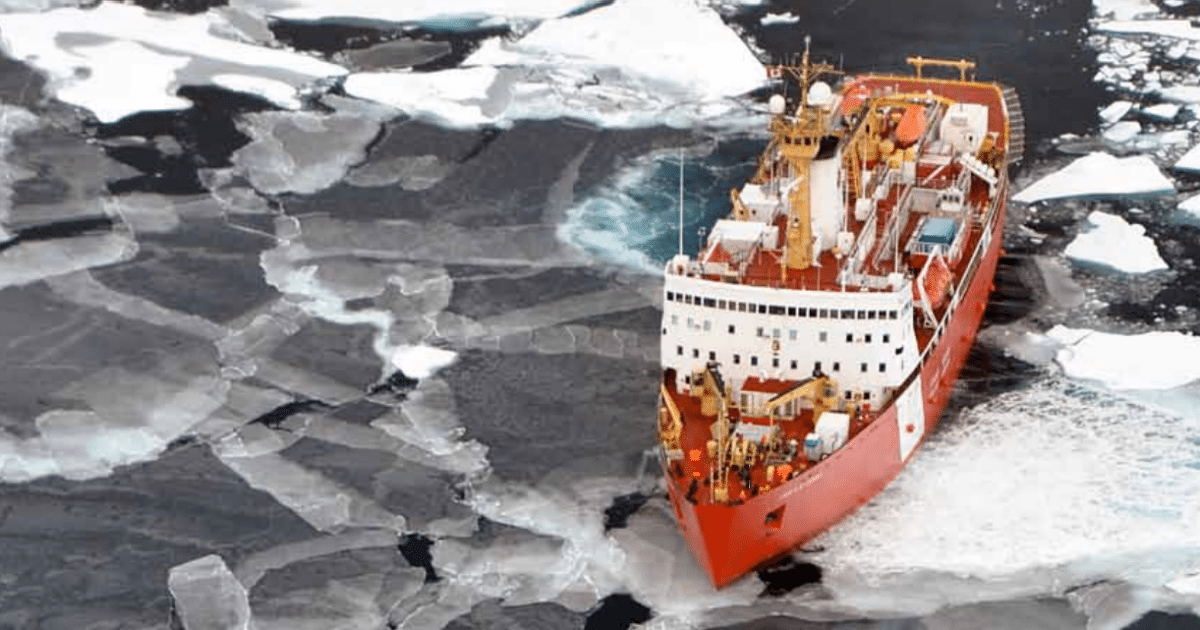 Image courtesy of the U.S. Coast Guard
Image courtesy of the U.S. Coast Guard
New Icebreakers Needed in a Melting Arctic
The U.S. Coast Guard has submitted a funding proposal to Congress requesting $750 million during fiscal year 2019 (FY2019) for the construction of new heavy polar icebreaking ships. As polar glaciers melt and sea ice retreats further north, it is crucial for the United States to have full maritime access to the Arctic, and the few American icebreakers currently in operation are not up to the task. Since arctic waters that are classified as “ice free” may still have significant amounts of ice, icebreaking ships will continue to be necessary for all arctic operations in the foreseeable future.
The Arctic covers 4% of the planet’s surface, and its territory is divided among 8 states: Norway, Sweden, Finland, Russia, the United States, Canada, Denmark (Greenland) and Iceland. Arctic temperatures are rising at twice the rate of temperatures in the rest of the world, making the region particularly vulnerable to the consequences of a warming climate. Melting glaciers contribute to global sea level rise, thawing permafrost weakens coastlines and disrupts terrestrial ecosystems, and retreating sea ice is linked to a host of consequences.
Seasonal sea ice retreat opens new shipping routes and makes new areas available for resource exploitation, especially offshore oil extraction. According to Christian Le Mière and Jeffrey Mazo of the International Institute for Strategic Studies (IISS), these changes are increasing the Arctic’s geostrategic importance, stoking inter-state competition in the region. As ice retreats, military forces can be deployed further north, opening the Arctic as a theatre of military operations as well as a source of resource wealth.
Both the IISS and the Finnish Institute of International Affairs do not predict an intense race for resources, or a new Cold War between Russia and NATO-led forces in the Arctic. Instead, they foresee a prominent role for non-military law-enforcement organizations, such as national coast guards. Although hard security issues lie outside of its purview, the Arctic Council has reached two agreements on maritime safety – the domain of maritime law-enforcement organizations. In Arctic Opening: Insecurity and Opportunity (2014), Le Mière and Mazo assert that law-enforcement organizations rather than militaries should be tasked with the bulk of Arctic security duties, in order to avoid “a costly and dangerous shift of military resources to the north.”
At the moment, Iceland and the United States primarily deploy coast guard ships to the Arctic, while Canada and Russia use their respective navies. The U.S. Coast Guard’s polar icebreaking fleet is composed of just three ships: one operational heavy icebreaker, Polar Star, commissioned in 1976 and well past its intended 30-year service life; Polar Star’s identical sister ship Polar Sea, which is no longer operational and serves as a source of spare parts for Polar Star; and one medium icebreaker, Healy, commissioned in 2000, which supports scientific missions in the Arctic.
The only other US-owned icebreaker is another medium icebreaker, Nathaniel B. Palmer, owned by the National Science Foundation and used to support Antarctic research. The difference between heavy and medium icebreaking ships is not necessarily their size, but their icebreaking capabilities- Polar Star can break through 6-foot thick Arctic ice, while Healy can only break through a 4-foot thick layer.
The Congressional Research Service reports that retreating sea ice will increase mission demands for icebreaking ships due to increased commercial ship, cruise ship, and naval surface ship operations, as well as increased exploration for oil and other resources. A 2013 Department of Homeland Security report estimated that six new icebreakers (3 heavy and 3 medium) might be required to meet full mission demands. More recently, a 2017 National Academies of Sciences, Engineering, and Medicine (NASEM) report presented a more conservative estimate, recommending that the Coast Guard build four new icebreakers (2 heavy and 2 medium).
Even if environmental changes did not increase mission demands, the Coast Guard icebreaking fleet would still need to expand, as is not meeting current demand levels. Since 2010, they have only been able to fulfill 78% of U.S. government requests for polar missions, due largely to the limited availability of heavy polar icebreakers.
The $750 million requested for FY2019 would allow the Coast Guard to begin construction of the first new heavy polar icebreaker in FY2019, and have it enter service in 2023. If Congress rejects the proposal, the U.S. could be left with no heavy icebreaking capacity at all in the next few years.
When compared to Russia’s 46 operational icebreakers, plus another 15 currently planned or under construction, or even China’s 3 icebreaking ships, the lack of American access to the Arctic is an alarming possibility for U.S. security interests.





